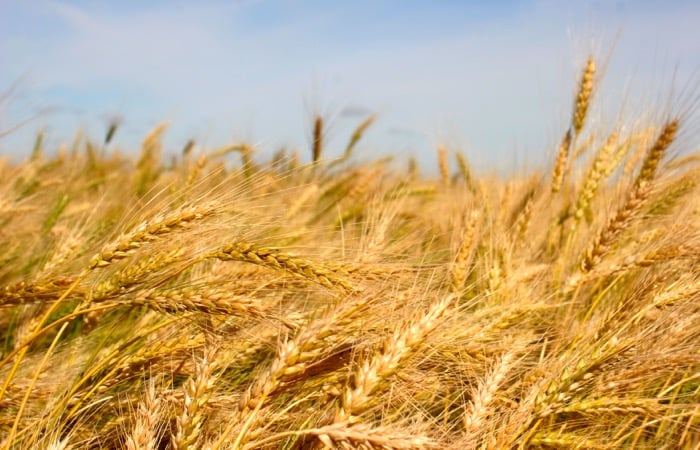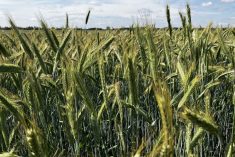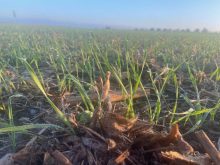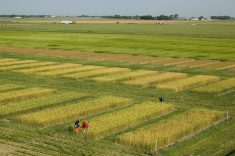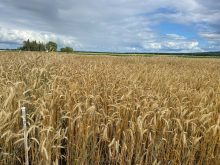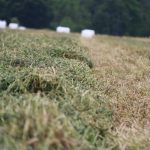Winter wheat is off to a good start in 2020, but there aren’t all that many acres around.
Ken Gross, agronomist with the Western Winter Wheat Initiative, says many winter wheat acres were planted just in time to catch the same moisture that ground harvest to a halt last year, and so saw good growth prior to freeze-up.
That weather also, however, curbed the window for seeding winter cereals, Gross noted.
Winter cereals in general have fought with their seeding window during the last few wet falls, he said.
Read Also

Manitoba trials work toward drone spraying approvals
Canada’s PMRA says pesticides need drone-specific labels before drone spraying can take off; Manitoba crop trials are adding data towards that approvals process.
Winter wheat acres in Manitoba have slid since 2013, when acres topped 615,000. Only 30,000 acres of winter wheat went into the ground in 2019.
Some of that can be attributed to a shift towards hybrid fall rye, Gross said. He estimates that about 100,000 acres of the hybrid cereal went in last fall. At the same time, he said, new higher-yielding spring wheat varieties have also chipped at winter wheat acres.
“It’s squeezed the yield gap,” Gross said. “Winter wheat used to have a 40 per cent yield advantage to spring wheat and now that’s shrunk down to 10 to 20 per cent.”
The agronomist hopes that new winter wheat varieties such as AAC Wildfire and AAC Goldrush might help reverse the trend.
Both varieties have been marketed for winter hardiness and yield. According to data published in Seed Manitoba 2020, both varieties showed better winter hardiness than the currently more popular Emerson or AAC Gateway, while AAC Wildfire yielded seven to eight bushels an acre more on average. Breeders have noted concern, however, with AAC Wildfire’s lack of stem rust resistance in Manitoba’s environment.
AAC Wildfire made up about one per cent of winter wheat acres seeded in 2019, according to data from the Manitoba Agricultural Services Corporation.


